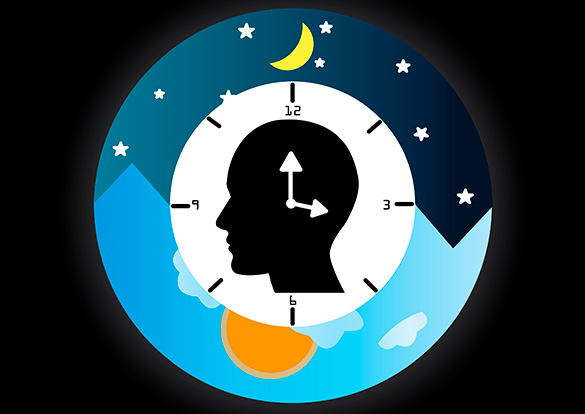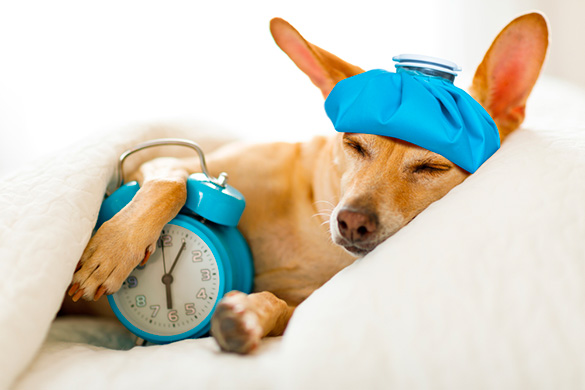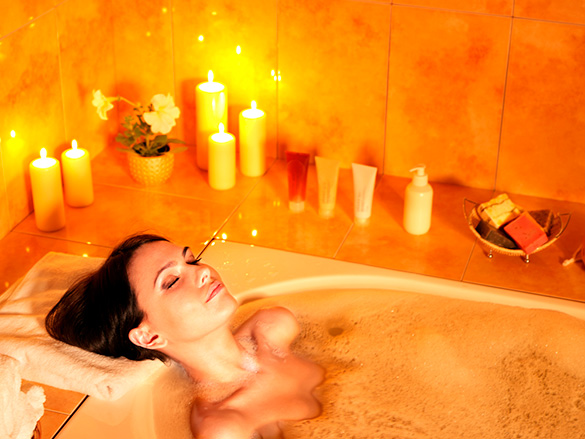![room-temperature[1]](https://thelifepilot.com/wp-content/uploads/2022/11/room-temperature1.jpg)
Here’s one thing that could be causing your insomnia that you probably haven’t thought about yet: the temperature of your bedroom. We know it sounds crazy, but the room temperature of where you sleep at night can have a profound effect on how well you sleep, or whether or not you sleep at all. If you’re curious as to why – or, more importantly, how you can use this information to improve your nightly rest – we’re about to dig into the science. So get comfy, get ready to learn something new, and open your mind to seeing your thermostat in a whole new light.
Your Body Temperature Affects Sleep
Contrary to popular belief, our bodies aren’t always at a perfect 98.6 Degrees. Your core body temperature actually fluctuates during different phases of the day. It usually stays more or less close to that goal temperature, but it will fluctuate up and down depending on whether you need to be awake or asleep.
Temperature and Melatonin
This temperature drop is important for good sleep the same way that protecting your eyes from too much blue light in the evening helps improve sleep (don’t worry, we’ll talk about that more in a future article). When the sun goes down and your body temperature starts to drop, it sends a signal to your brain that lets it know it’s time for bed. When your brain receives this signal, it starts releasing large amounts of melatonin. Melatonin is the hormone your body produces in order to trigger drowsiness so that you can fall asleep. The more melatonin your body releases in the evening, the easier it is to fall asleep and stay asleep. Healthy melatonin levels also help improve the quality of the sleep you get so that you can perform better and feel your best when you wake up in the morning.
Temperature and the Circadian Rhythm

This daily fluctuation happens in accordance with your circadian rhythm. Body temperature starts to rise in the early morning hours starting at around 3 AM and peaks somewhere between 5 PM and 7 PM. Under ideal circumstances, your core temperature will start to drop in a linear fashion right after the sun goes down. It continues this trajectory until around 3 AM, When it starts to spike back up in preparation for the next day.
When Things Go Haywire
Unfortunately, there are many things in our modern lifestyles which can get in the way of this daily temperature drop. Stress is one of them. When you are physically or emotionally stressed, you produce hormones like cortisol, adrenaline, and noradrenaline. All of these hormones trigger biological processes in the body which, long story short, will spike your metabolic rate and raise your core temperature.
Now this would be great news if we were talking about weight loss, fighting fatigue, or doing other important tasks during the day. But at night, this stress will kill your sleep. And it does so in part because it raises your core temperature too high. Something very similar happens when you are physically ill and you run a fever.
In order to prevent stress hormones from interfering with your sleep, you have to do what you can in order to calm yourself down and promote relaxation before bed (again, we’ll have more on that in a future article). But you should also be thinking about lowering the ambient temperature of the room you sleep in. Below, we’ll show you why.
The Cooler, the Better

Ambient temperature affects your sleep in two ways: it controls how easily you fell asleep, and it also has an impact on the quality of sleep you get. Trying to fall asleep in a warm room will delay sleep latency (the time it takes you to fall asleep in the first place). It has also been shown in many scientific studies to decrease your sleep quality, too.
Being Cool = Better Sleep
For example, one sleep study performed on participants who wore special temperature controlled clothing to bed showed that cooling them down improved sleep latency by 20% – and improve sleep quality by as much as 96% in people who had the most trouble falling asleep under normal circumstances. That’s a very significant impact!
How Cool Is “Cool”?
The ideal temperature for most people is around 65 degrees Fahrenheit. But it’s important to understand the assumptions which led to determining that exact temperature – Some of the most important of which include:
- That you have control over your own thermostat
- That you are using lots of bedding (blankets, pillows, sheets, etc)
- That you are wearing some sort of clothing to bed
That first assumption is the easiest one to control – but not for everyone. Not everyone has the authority to set their own thermostat, or they may have an aversion to setting the temperature so low if they are worried about the cost of their energy consumption. The good news is that there are a few different workarounds you can utilize instead. They are largely cost-effective, and they can make a big impact on how well you sleep!
Core Temperature Biohacks
Obviously, the easiest thing to do would just be to adjust your thermostat so that the ambient temperature of the room is the most conducive for sleep. But since that isn’t possible for everybody, most people need to find an effective work around. We have a couple of simple and very cost-effective solutions that we think you might want to try the next time you’re struggling to fall asleep at bedtime.
The Power of a Nice, Warm Bath

First, take a hot bath or shower about an hour before bed. This seems counterintuitive, but there is a logical method in the madness. When you heat your body up with a hot shower – especially at night – your body’s natural thermoregulation has to work a little harder to dissipate heat. This effort can help cool you down that much more so that your temperature is where it needs to be when you climb in the bed.1
Exercise (but Be Careful With This One)
You can multiply this effect synergistically by throwing exercise into the mix; just be very careful and precise with your timing. The problem with exercising too soon before bed is that it boosts all of those stress hormones we talked about earlier (the ones which raise your metabolic rate, and therefore your body temperature). If you want to use exercise to help you sleep, make sure you complete your exercise two to three hours before bed at the absolute latest. Any less than that, and the stress hormones won’t have time to clear your system. Follow up your exercise with a hot shower or bath, and you can really move the needle on your core temperature in the right direction.
Bedroom Apparel & Accessories
You can adjust your sleeping environment in other ways that help reduce your body temperature, too. For example:
- Try wearing less clothing to bed – clothing, unless specially designed to do otherwise, retains heat. The warmer you are, the tougher it will be for your body to drop its core temperature to adequate levels for sleep
- Use fewer blankets – or ditch them entirely. Just like clothing, blankets and thick sheets all retain heat and trap your body in a cocoon of warmth. If it’s below 65 degrees in your bedroom, by all means, bring on the blankets; but if not, keep them light and breathable
- Change up your mattress – mattresses that retain heat, like memory foam does, will also contribute to a warmer-than-ideal core body temperature at night. If you have the spare cash, invest in a mattress that is designed for maximum air flow and temperature regulation. It’ll pay off in the long run!
References:
- J. A. Horne and A. J. Reid, “Night-time sleep EEG changes following body heating in a warm bath,” https://www.ncbi.nlm.nih.gov/pubmed/2578367






